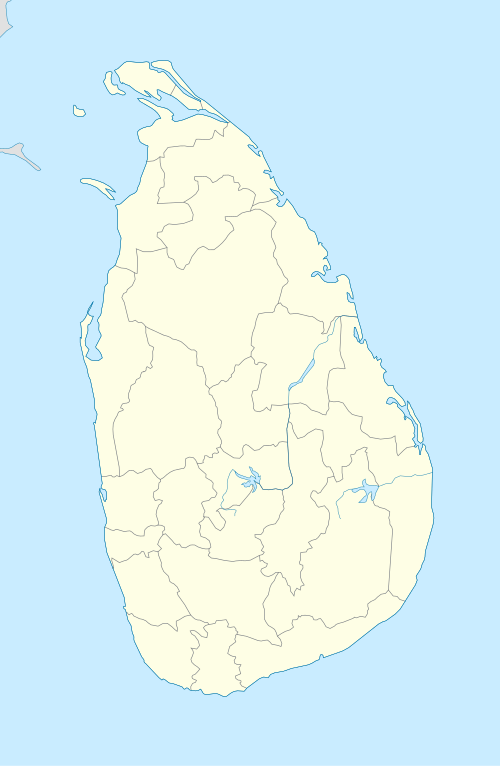Ussangoda National Park
| Ussangoda National Park | |
|---|---|
|
IUCN category II (national park) | |
 Location of Ussangoda National Park | |
| Location | Southern Province, Sri Lanka |
| Nearest city | Hambantota |
| Coordinates | 6°06′00″N 80°59′22″E / 6.10000°N 80.98944°ECoordinates: 6°06′00″N 80°59′22″E / 6.10000°N 80.98944°E |
| Area | 349 hectares (1.35 sq mi) |
| Established | 2010 |
| Governing body | Department of Wildlife Conservation |
Ussangoda National Park is the newest and the 21st national park in Sri Lanka. The objectives of establishing the new national park are providing long term protection for the area's biological, archaeological and geographical values.[1] The park borders the Kalametiya Wildlife Sanctuary in the east.
In Hindu mythology, Ussangoda is believed to be the place where King Ravana lands his peacock chariot.[2] Ussangoda is an important breeding ground for sea turtles and covers both land and sea areas. The red earth forms the soil of the area and the stunted vegetation is a feature resulted by heavy sea breeze. There are several archaeological sites of the origins in the pre-historic times also.[1] The explanation for red soil is a high concentration of Ferric oxide in the area.[3] Ussangoda is one of the four serpentine sites in Sri Lanka.[4] The area is proposed to be designated as a Geopark originally. However due to the area's biodiversity and other important features such as archaeological and geographical values instead Ussangoda had been declared a national park.[4]
References
- 1 2 "Ussangoda National Park Declared". dwc.gov.lk. Department of Wildlife Conservation. Retrieved 30 September 2010.
- ↑ "Ussangoda - the 21st National Park". Sunday Observer. 27 June 2010. Retrieved 30 September 2010.
- ↑ "Beauty and Mystery at Sri Lanka's newest National Park - Ussangoda" (PDF). UK Lanka Times. July 2010. Retrieved 30 September 2010.
- 1 2 Paranamanna, Lakna (10 June 2010). "Ussangoda declared 'National Park'". Daily Mirror. Retrieved 30 September 2010.